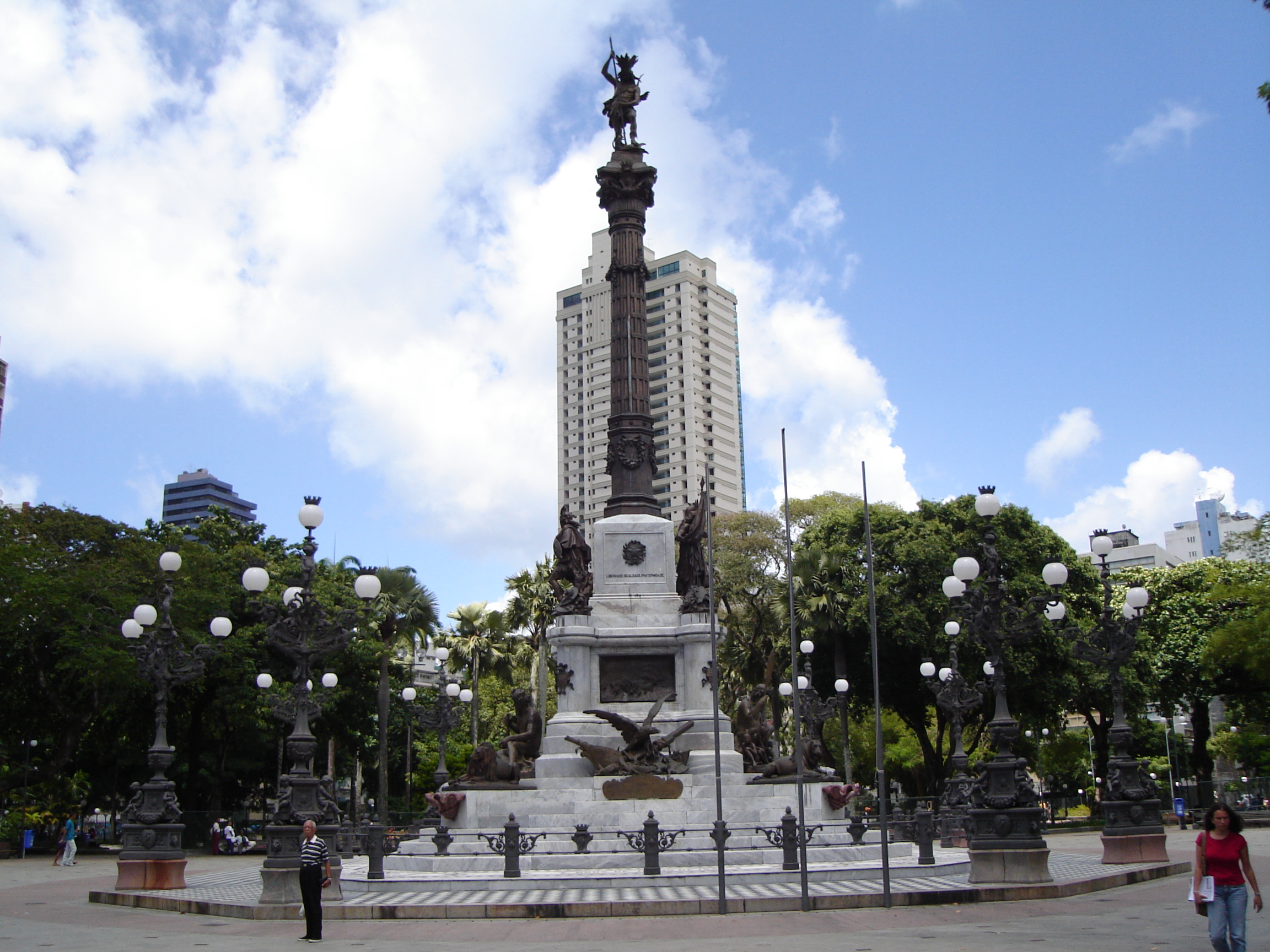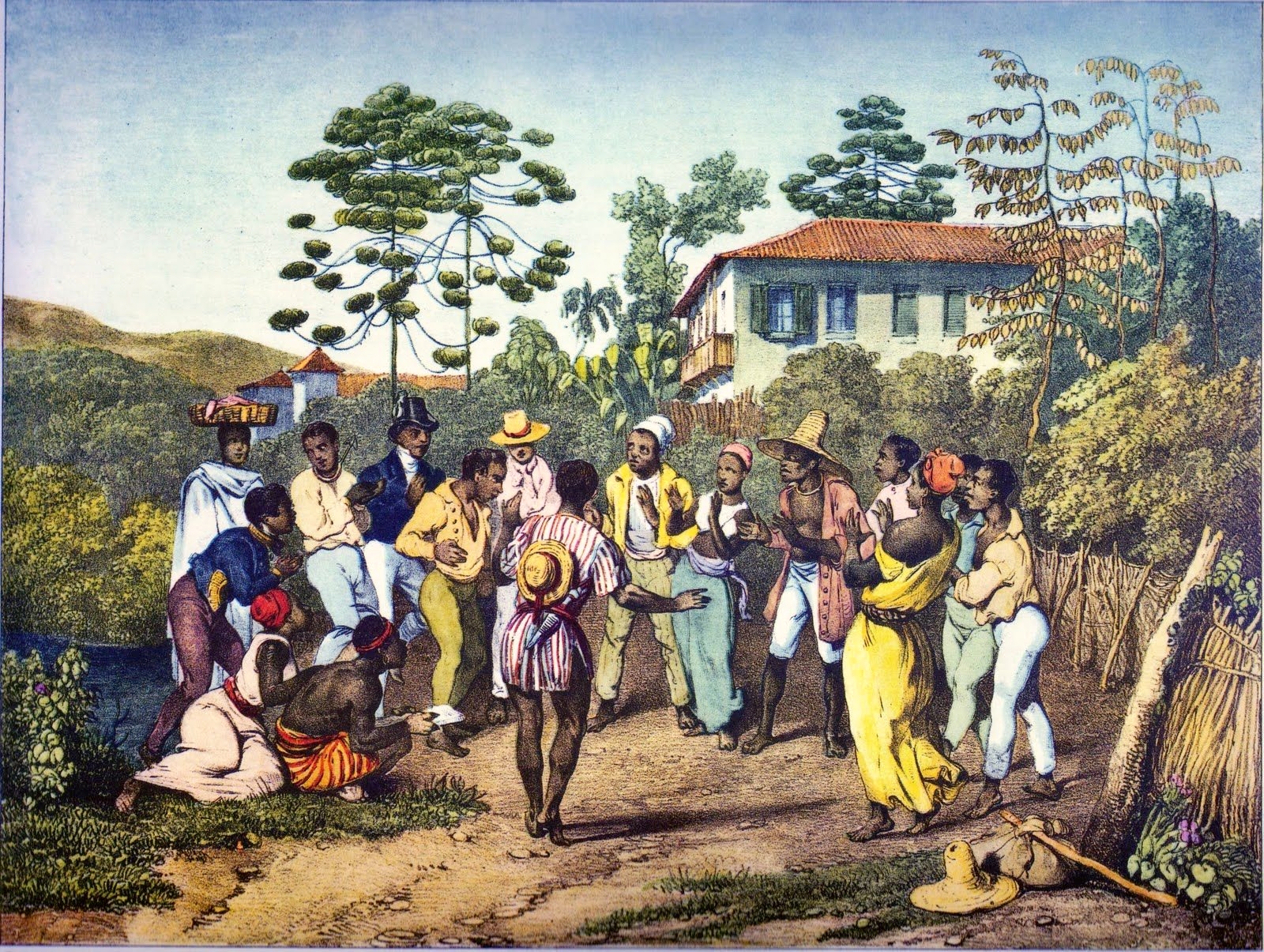|
Mestre Bimba
Manuel dos Reis Machado, commonly called Mestre Bimba (; November 23, 1900 – February 5, 1974), was a Brazilian capoeira ''mestre'' and the founder of the '' capoeira regional'' style. Bimba was one of the best capoeiristas of his time, undefeated in numerous public challenges against fighters from various martial arts. Bimba came from capoeira Angola, and taught Angola style. He reformed capoeira primarily in response to Burlamaqui and Sinhôzinho's attempts to strip it of music and African traditions, and transform it into a mere set of bodily techniques. On the other hand, he was unsatisfied with capoeira Angola of his time, because of its emphasis on rituals and ineffective kicks. Bimba encouraged adding new kicks to capoeira, as long as they were effective and incorporated into the basic footwork, '' ginga''. In declaration of his style in 1936, Bimba claimed to have subtracted two and added 15 kicks to traditional capoeira. Later, this number rose to 52 techniques fr ... [...More Info...] [...Related Items...] OR: [Wikipedia] [Google] [Baidu] |
Salvador, Bahia
Salvador () is a Municipalities of Brazil, Brazilian municipality and capital city of the Federative units of Brazil, state of Bahia. Situated in the Zona da Mata in the Northeast Region, Brazil, Northeast Region of Brazil, Salvador is recognized throughout the country and internationally for its #Cuisine, cuisine, #Music, music, and #Pelourinho, architecture. The African influence in many cultural aspects of the city makes it a center of Afro-Brazilian culture. As the Capitals of Brazil, first capital of Colonial Brazil, the city is List of oldest continuously inhabited cities, one of the oldest in the Americas. Its foundation in 1549 by Tomé de Sousa took place on account of the implementation of the List of governors-general of Brazil, General Government of Brazil by the Portuguese Empire. Centralization as a capital, along with Portuguese colonization, were important factors in shaping the profile of the municipality, as were certain geographic characteristics. The construct ... [...More Info...] [...Related Items...] OR: [Wikipedia] [Google] [Baidu] |
Batuque (game)
Batuque (drumming) was a general term for various Afro-Brazilians, Afro-Brazilian practices in the 19th century, including music, dance, Combat sport, combat game and religion. ''Batuques'', or drumming ceremonies were an important cultural activity among the African population. These performance circles were a regular occurrence on Sunday evenings and holidays, drawing large crowds of enslaved Africans. Laws introduced in 1822 allowed police to shut down ''batuques''. Despite the police repression, the batuques persisted covertly at the town's outskirts or along the shoreline. Africans devised tactics to safeguard the batuques. They would scatter when the police approached and reconvene elsewhere to resume. In some cases, they responded to police repression with violence. Within the ''batuques'' gatherings, there were specific groups dedicated to a combat game known as ''pernada'' in Rio de Janeiro, Rio and ''batuque'' or ''batuque-boi'' in Salvador, Bahia, Salvador. In Bahia ... [...More Info...] [...Related Items...] OR: [Wikipedia] [Google] [Baidu] |
São Paulo
São Paulo (; ; Portuguese for 'Paul the Apostle, Saint Paul') is the capital of the São Paulo (state), state of São Paulo, as well as the List of cities in Brazil by population, most populous city in Brazil, the List of largest cities in the Americas, Americas, and both the Western Hemisphere, Western and Southern Hemispheres. Listed by the Globalization and World Cities Research Network (GaWC) as an global city, alpha global city, it exerts substantial international influence in commerce, finance, arts, and entertainment. It is the List of largest cities#List, largest urban area by population outside Asia and the most populous Geographical distribution of Portuguese speakers, Portuguese-speaking city in the world. The city's name honors Paul the Apostle and people from the city are known as ''paulistanos''. The city's Latin motto is ''Non ducor, duco'', which translates as "I am not led, I lead." Founded in 1554 by Jesuit priests, the city was the center of the ''bandeirant ... [...More Info...] [...Related Items...] OR: [Wikipedia] [Google] [Baidu] |
Gracie Family
The Gracie family () is a family of martial artists originally from Belém, state of Pará, Brazil, whose ancestors came from Paisley, Scotland. They are known for promoting the self-defense martial arts system of Gracie jiu-jitsu, commonly known as Brazilian jiu-jitsu, originating from '' Kano jiu-jitsu'' (Judo) brought to Brazil by ''judoka'' prizefighter Mitsuyo Maeda. They have been successful in combat sports competitions for over 80 years, representing their self-defense system (Gracie jiu-jitsu) including mixed martial arts (MMA), vale tudo and submission wrestling events. Several members were involved in the creation of the Ultimate Fighting Championship (UFC), along with promoter Art Davie. As a family, the Gracies upheld the " Gracie Challenge", a martial arts challenge intended to showcase the effectiveness of their style of grappling against other martial arts disciplines. Members have an affinity to, and are consanguineously related to, the Machado family. J ... [...More Info...] [...Related Items...] OR: [Wikipedia] [Google] [Baidu] |
Mestre Pastinha
Vicente Ferreira Pastinha (April 5, 1889, Salvador, Bahia, Brazil – November 13, 1981), known as Mestre Pastinha, was a ''mestre'' of the Afro-Brazilian martial art capoeira and a codifier of the traditional capoeira Angola style. Mestre Pastinha was a brilliant capoeirista whose game was characterized by agility, quickness and intelligence. He demonstrated that even in his seventies, he could engage in acrobatics and outperform much younger capoeiristas. He chose not to introduce new kicks in order to preserve the original art. He wanted his students to improve the principal techniques (''cabeçada'', '' rasteira'', '' rabo de arraia'', '' chapa de frente'', '' chapa de costas'', '' meia lua'' and ''cutilada de mão''), which allows a proper ''jogo de dentro'' (inner game) to develop. Pastinha was known as the "philosopher of capoeira" because of his use of many aphorisms. He made it his mission to clearly separate capoeira Angola from the violence. Two principal Pastinha' ... [...More Info...] [...Related Items...] OR: [Wikipedia] [Google] [Baidu] |
A Tarde
''Jornal A Tarde'', widely known as ''A Tarde'', is a daily newspaper published in Bahia, Brazil. The paper was founded by the journalist and politician on 15 October 1912. It is currently the oldest circulating newspaper of Bahia, and the largest of the Brazil Brazil, officially the Federative Republic of Brazil, is the largest country in South America. It is the world's List of countries and dependencies by area, fifth-largest country by area and the List of countries and dependencies by population ...ian regions North and Northeast. Its headquarters is located at the Professor Milton Cayres de Brito street, 204, Caminho das Árvores, in Salvador. References External links * 1912 establishments in Brazil Daily newspapers published in Brazil Newspapers established in 1912 Portuguese-language newspapers Companies based in Salvador, Bahia {{Brazil-newspaper-stub ... [...More Info...] [...Related Items...] OR: [Wikipedia] [Google] [Baidu] |
Human Position
Human positions refer to the different physical configurations that the human body can take. There are several synonyms that refer to human positioning, often used interchangeably, but having specific nuances of meaning. *''Position'' is a general term for a configuration of the human body. *''Posture'' means an intentionally or habitually assumed position. *''Pose'' implies an artistic, aesthetic, athletic, or spiritual intention of the position. *''Attitude'' refers to postures assumed for purpose of imitation, intentional or not, as well as in some standard collocations in reference to some distinguished types of posture: " Freud never assumed a fencer's attitude, yet almost all took him for a swordsman." *''Bearing'' refers to the manner of the posture, as well as of gestures and other aspects of the conduct taking place. Basic positions While not moving, a human is usually in one of the following basic positions: All-fours This is the static form of crawling which is a ... [...More Info...] [...Related Items...] OR: [Wikipedia] [Google] [Baidu] |
Takeo Yano
Takeo Yano (矢野 武雄), also known as Takeo Iano, was a Japanese judoka who helped in the establishment of Brazilian jiu-jitsu in Brazil. Biography Yano was a standout in judo, learning it in Chinzei High School and the Dai Nippon Butoku Kai under the renowned Hajime Isogai.As of 1930, he held the first dan rank at Kodokan. He worked with the Ono brothers, Yasuichi and Naoichi. They taught Judo in the North of Brazil. He also taught in São Paulo and Rio de Janeiro. Along with Kazuo Yoshida in Bahia (founder of Bahia Judo), they helped to establish Brazilian jiu-jitsu. In 1937, Yano fought Hélio Gracie to a draw. But on 1 September 1938, when facing another member of the Gracie family, and the best fighter of the family, George Gracie, Yano lost through a leglock. As a fighter he took on the name ″Oriental Demon″. He also fought Waldemar Santana and defeated him by armlock at the fourth round. His earlier black belts included Jose Jurandir Moura whom he taught in For ... [...More Info...] [...Related Items...] OR: [Wikipedia] [Google] [Baidu] |
Mitsuyo Maeda
naturalized as Otávio Maeda (),Virgílio, p. 9 was a Japanese people, Japanese-born judo, ''judōka'' and prizefighter in no holds barred competitions. He was known as Count Combat or ''Conde Koma'' in Spanish and Portuguese, a nickname he picked up in Spain in 1908. Along with Soshihiro Satake, Antônio Soshihiro Satake, he pioneered judo in Brazil, the United Kingdom, and other countries. Maeda was fundamental to the development of Brazilian jiu-jitsu, including through his teaching of Carlos Gracie and others of the Gracie family.Virgílio, p. 93 He was also a promoter of Japanese Brazilians, Japanese emigration to Brazil. His accomplishments led to him being called the "toughest man who ever lived" and being referred to as the father of Brazilian Jiu-jitsu. Biography Maeda was born in Funazawa Village, Hirosaki City, Aomori Prefecture, Japan, on November 18, 1878. He attended Kenritsu Itiu high school (currently Hirokou—a Hirosaki school). As a child, he was known as ... [...More Info...] [...Related Items...] OR: [Wikipedia] [Google] [Baidu] |
Jogo Do Pau
() is a Portugal, Portuguese and Spain, Spanish martial art which developed in the regions along the Minho (river), Minho River: Minho (province), Minho, Trás-os-Montes (region), Trás-os-Montes, Province of Pontevedra, Pontevedra and Province of Ourense, Ourense, focusing on the use of a staff of fixed measures and characteristics. It was used for self-defense and also to settle arguments and matters of honour between individuals, families, and even villages. While popular in the northern mountains, it was practically unknown elsewhere, and those who did practice it were taught by masters from the Norte Region, Portugal, North of Portugal and Galicia (Spain), Galicia. History Amid a conflict between nobles and liberals, the latter were forbidden from carrying or wearing swords. In response, liberals embraced staff combat, a practice that extended its influence across Portugal, reaching both the lower and noble classes. Many Portuguese immigrants skilled in these methods in ... [...More Info...] [...Related Items...] OR: [Wikipedia] [Google] [Baidu] |
Greco-Roman Wrestling
Greco-Roman (American English), Graeco-Roman (British English), or classic wrestling (Euro-English) is a style of wrestling that is practiced worldwide. Greco-Roman wrestling was included in the first modern Olympic Games in 1896 and has been in every edition of the summer Olympics held since Wrestling at the 1904 Summer Olympics, 1904.FILA WrestlinHistory of Greco-Roman Wrestling This style of wrestling forbids Grappling hold, holds below the waist, which is the main feature that differentiates it from freestyle wrestling (the other form of wrestling contested at the Olympics). This restriction results in an emphasis on throw (grappling), throws, because a wrestler cannot use trips to Takedown (grappling), bring an opponent to the ground or hook/grab the opponent's leg to avoid being thrown. Greco-Roman wrestling is one of several forms of amateur competitive wrestling practiced internationally. The other wrestling disciplines sanctioned by United World Wrestling are: men's fre ... [...More Info...] [...Related Items...] OR: [Wikipedia] [Google] [Baidu] |






